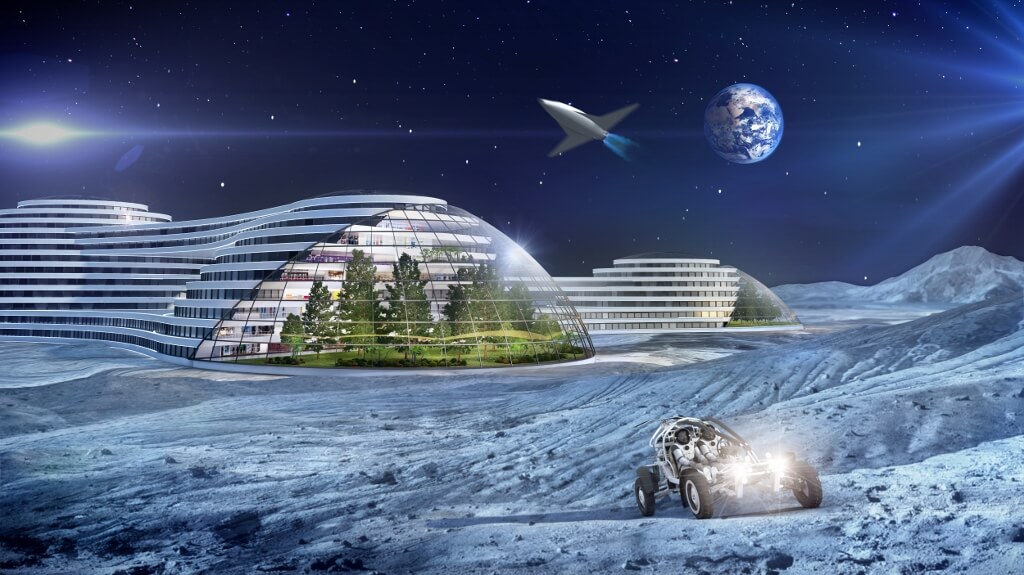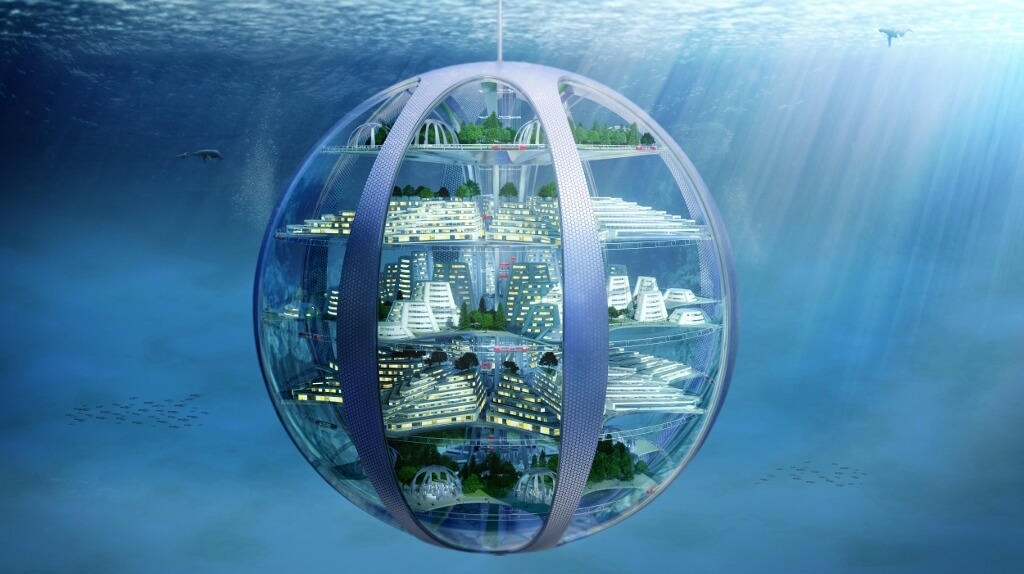Super-skyscrapers which will dwarf the Shard, under water bubble cities and origami furniture will all be reality in 100 years’ time, according to a new report charting the future of human invention.
How Technology Will Change The Way We Live In 100 Years
Super-skyscrapers which will dwarf the Shard, under water bubble cities and origami furniture will all be reality in 100 years’ time, according to a new report charting the future of human invention.

Commissioned by Samsung, the SmartThings Future Living Report paints a vivid picture of our future lives; suggesting the way we live, work and play will change beyond all recognition over the course of the next century.
It was authored by a team of leading academics including TV presenter and one of the UK’s leading space scientists, Dr Maggie Aderin-Pocock, award-winning futurist architects and lecturers at the University of Westminster Arthur Mamou-Mani and Toby Burgess, as well as pioneering urbanists Linda Aitken and Els Leclerq.
Many of the predictions were influenced by environmental conditions, with growing populations leading to the development of structures that are better able to cope with space constraints and diminishing resources.
As cities fill up, we will burrow deeper and build higher with the creation of:
· Super skyscrapers: carbon nanotubes and diamond Nano threads will help us create towering megastructures that will dwarf today’s skyscrapers
· Earth-scrapers: just as we build up we will also dig down – huge structures will tunnel 25 storeys deep, or more
· Underwater cities: are likely to become a reality – using the water itself to create breathable atmospheres and generating hydrogen fuel through the process
· Personal flying drones replacing cars: some of us will be travelling skyways with our own personal flying drones, some strong enough to carry entire homes around the world for holidays
As technology develops, we’ll see:
· 3D printing of houses and furniture: we will be able to print exact replicas of large scale structures like houses out of local, recyclable materials so that we really can have all the comforts of home while we are away
· Flexible, smart walls and 3D printed Michelin starred meals: smart walls will mean you won’t need to decorate your home - LED room surfaces will adapt to suit your mood. When it comes to entertaining, there will be no more botched recipes or pizza deliveries – instead we will be downloading dishes from famous chefs that we will tailor to our personal needs. We will be able to 3D-print a banquet or a favourite cake in minutes
· Virtual meetings: our working lives will be transformed with the use of holograms which will allow us to attend meetings virtually, without leaving the comfort our homes
· Stepping into home medi-pods will confirm if you really are ill, providing a digital diagnosis and supplying medicine or a remote surgeon if needed
· Ultra-low latency connectivity: Ultra-fast networks, including 5G, mapped by compare5g.com, and its successors will open up new, real-time use-cases. For instance, it may be possible to pay other drivers to move out of your way in real-time with crypto on the highway, if you are in a rush.
And finally, we will:
· Colonise space: first the Moon, then Mars and then far beyond into the galaxy
The Smart Home of Tomorrow from SmartThings on Vimeo.
On top of looking at how we will live in 100 years’ time, SmartThings surveyed 2,000 British adults to pinpoint the predictions the nation thought were most likely to become a reality in the future. The survey shines a spotlight on the public perception of the future and suggests that building further into the sky, and colonising oceans are believed to be the biggest future trends as space and resources become scarce.
The top ten predictions for future living:
1. Virtual work meetings – the ability to work from anywhere and attend meetings remotely via avatars/holograms (48%)
2. Commercial flights into space (41%)
3. Virtual interior decoration so that you can program your own surroundings/ LED walls that adapt your surroundings to your mood (26%)
4. 3D printed houses/furniture/food - meaning you can download and print these things at home (25%)
5. At-home scanning capsules/pods that can diagnose health problems and administer medicines/treatments (24%)
6. Colonising other planets as we use up resources on Earth (19%)
7. AI becoming a normal part of daily life – taking over from humans in many industries (18%)
8. Giant skyscrapers that can house entire cities: the construction of which is allowed for by the development of new super strong materials (18%)
9. At-home hydroponic farms (that don't require soil) where you can grow your own food (17%)
10. Earth-scrapers – buildings that are built down into the ground, so entire cities are subterranean due to space constraints and also to provide further shelter (16%)
Maggie Aderin-Pocock, who co-authored the report, said: “Our lives today are almost unrecognisable from those a century ago. The internet has revolutionised the way we communicate, learn and control our lives. Just 25 years ago, technology like SmartThings would have been inconceivable, yet today, developments like this let us monitor, control and secure our living spaces with the touch of a smartphone.
"Over the next century we will witness further seismic shifts in the way we live and interact with our surroundings – working on The SmartThings Future Living Report with a panel of industry experts, has allowed me to explore what these could be.
“We are likely to see the emergence of towering megastructures as well as sub-aquatic cities and transportation via advanced flying drones – some of which could be strong enough to transport entire houses on holiday.”
James Monighan, UK MD of Samsung SmartThings, which commissioned the report, added: “The smart home revolution will have massively positive implications on how we live. Our homes are becoming smarter and can now detect the presence of things like people, pets, smoke, humidity, lighting, and moisture. And this is just the beginning.
"Just as the technology driving the Internet has spread to smartphones and smart homes, the smart home revolution is destined to spread to larger communities and countries. By simply turning lights and heating off when we don't use them, we can reduce emissions.
"By being able to better monitor and secure our homes, we can reduce crime. By better monitoring the habits of aging relatives, we help them to achieve greater independence and a higher quality of life.”
The report was commissioned on behalf of SmartThings, a system which allows people to make their home smarter, meaning that at any time and from anywhere it is possible to switch on lights, turn up the thermostat or unlock the back door, all via a simple app or automatically through our daily routines - something that might have seemed like science fiction as little as 10 years ago, but today is a reality.
The report has been published to coincide with the announcement that from the start of 2016, SmartThings will work with hundreds of products from a wide range of brands, as well as working with all of Samsung’s TVs as well as refrigerators, washer machines, ovens, and robot vacuum cleaners.
The full SmartThings Future Living Report is available to read and download at www.samsung.com/uk/smartthings/
Thanks for signing up to Minutehack alerts.
Brilliant editorials heading your way soon.
Okay, Thanks!




